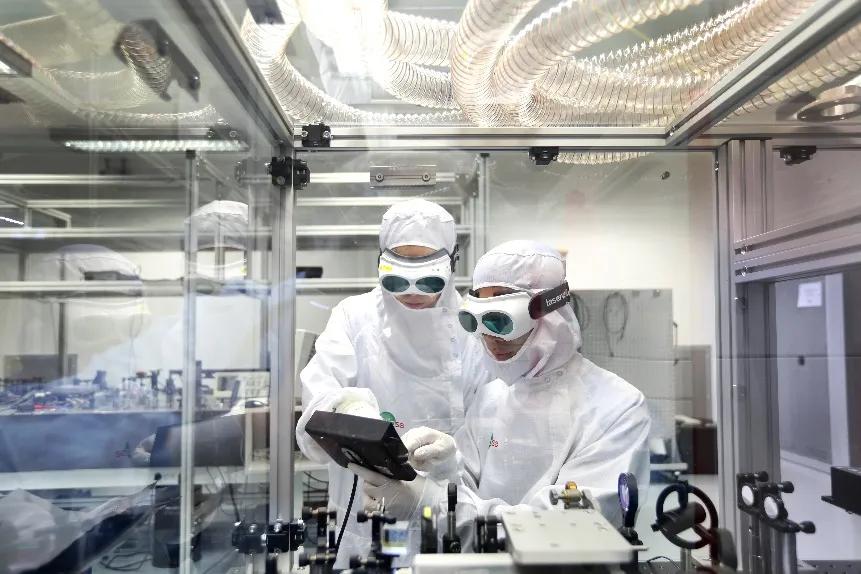In this year‘s programme, the students will do research in the field of quantum dots which are very small crystals consisting of only about a hundred atoms. Due to their small size, the dots behave according to the laws of quantum physics, thus enabling the occurrence of phenomena such as the teleportation or the existence of matter at two locations at the same time.
From the 7th of September until the 9th of September 2018, the ELI Beamlines and HiLASE laser centres of the Institute of Physics in Dolní Břežany will provide an opportunity for 12 secondary school students to work at the centres’ laboratories as part of the Talent Academy. The event will take place for the second time now. The centres are trying to find the best students in the country to be raised and motivated to work in laser physics. The approach adopted by the centres in working with young talents is virtually unique, especially in the high degree of freedom that the participants are given during the programme. At the beginning, the students will receive a research task, will learn how to work with any needed scientific instruments and how to apply any basic procedures. Then, it will be only up to them and their teams to decide which working method they propose; how they perform individual experiments and how they process any acquired data. The researchers from the facility will only be there to assist them and to adopt their ideas to match the current state of science and technology.
In this year‘s programme, the students will do research in the field of quantum dots which are very small crystals consisting of only about a hundred atoms. Due to their small size, the dots behave according to the laws of quantum physics, thus enabling the occurrence of phenomena such as the teleportation or the existence of matter at two locations at the same time. “Today, the topic of quantum dots has had repercussions throughout the scientific community; first computer monitors using this technology have emerged on the market and quantum dots have found promising application in the first series of quantum computers. We have picked a current topic of the big science which is dealt with in reputable scientific magazines and examined by a number of research teams. We would like to show the students in full extent what the science of today looks like, which would be impossible to do if we just assigned them a research task that has already been resolved for centuries,” said Michal Vyvlečka, the researcher from the HiLAS Centre.
The twelve participants of the Talent Academy who are expected to arrive at the laser centres this week have been selected among several dozens of applicants. They underwent a complex test to assess their ability to understand a scientific text and to think out of the box based on the received information to be able to find an original solution to a problem. Jaroslav Nejdl, one of the mentors of the participants of the Talent Academy, added: “We are trying to teach the students in particular how to analyse complex problems and subsequently how to solve such problems using any research methodology. These are the skills that they do not learn at schools, yet they are crucial for the work of a researcher.” The student will present the results of their work on the 9th of September, 2018 at a short final conference which will take place from 10:30 at the premises of the ELI Beamlines research centre.
The laser centres will keep in touch with the students throughout the whole of next year. The best students will receive an internship offer to work in research teams to be able to get some more detailed insight into the research in laser physics as part of other activities. “We hope that participation in the Talent Academy will help the students of secondary schools find a suitable field of study at the university. Given this long-term cooperation, we don’t lose touch with the students and we gradually prepare them for the work in science, and ideally, for the work at our laser centres directly,” concludes Hana Strnadová from the PR Department of ELI Beamlines.
Basic information for applicants:
Organisers: the Institute of Physics of the CAS – ELI Beamlines and HiLASE laser centres.
An independent jury consists of scientists from the Institute of Physics of the Academy of Sciences.
Applicant‘s profile: a student of a four-year study programme at a grammar school, higher classes of the eight-year study programme (kvinta – oktáva) or a student of any technical secondary school with interest in natural sciences, physics in particular.
The 12 finalists will be selected by an expert jury until 20/7/2018 and the results will be published at the website of the Institute of the CAS www.fzu.cz.
More information:
www.fzu.cz/talentova-akademie, www.facebook.com/TalentovaAkademie(link is external)
Illustrational photos: bit.ly/IlustracniFoto_TA2018(link is external)
Contact:
HiLASE: Radka Kozáková, Radka [dot] Kozakova [at] hilase [dot] cz, 601 560 164
ELI Beamlines: Hana Strnadová, Hana [dot] Strnadova [at] eli-beams [dot] eu, 601 560 333


